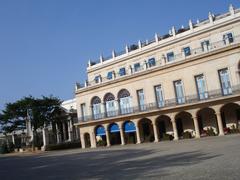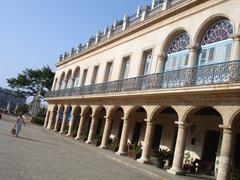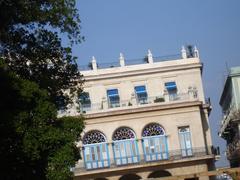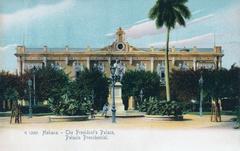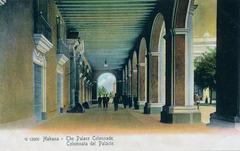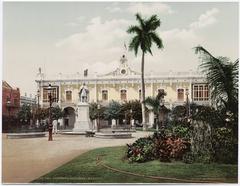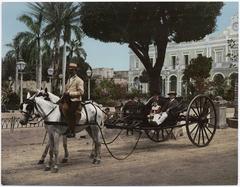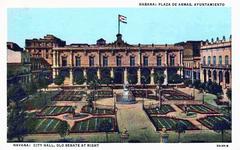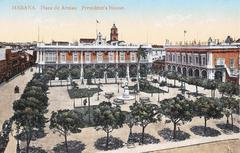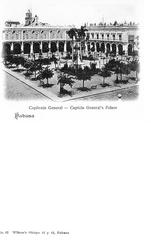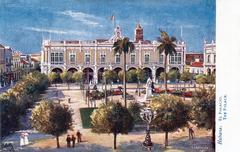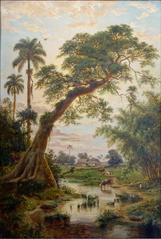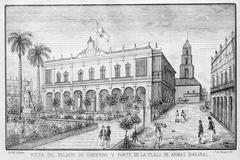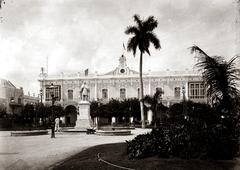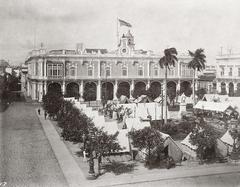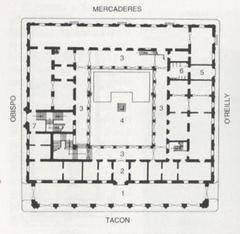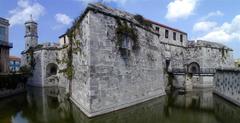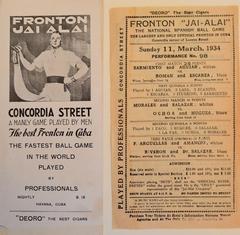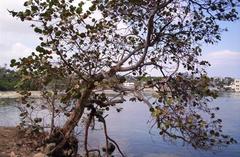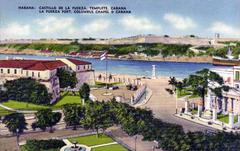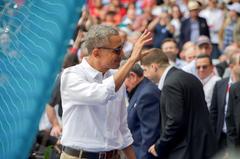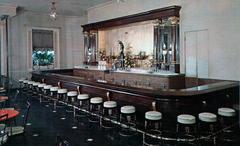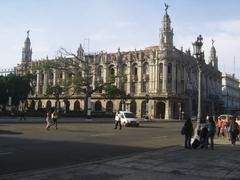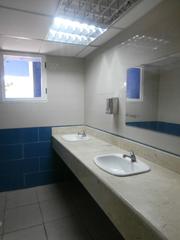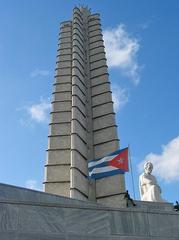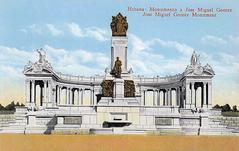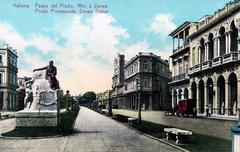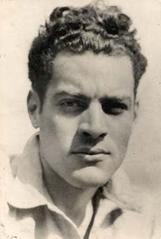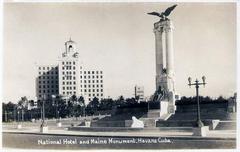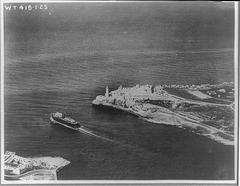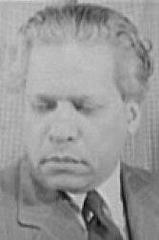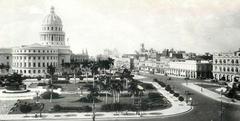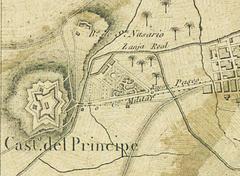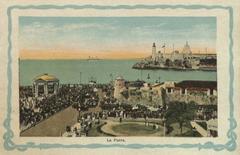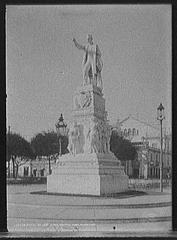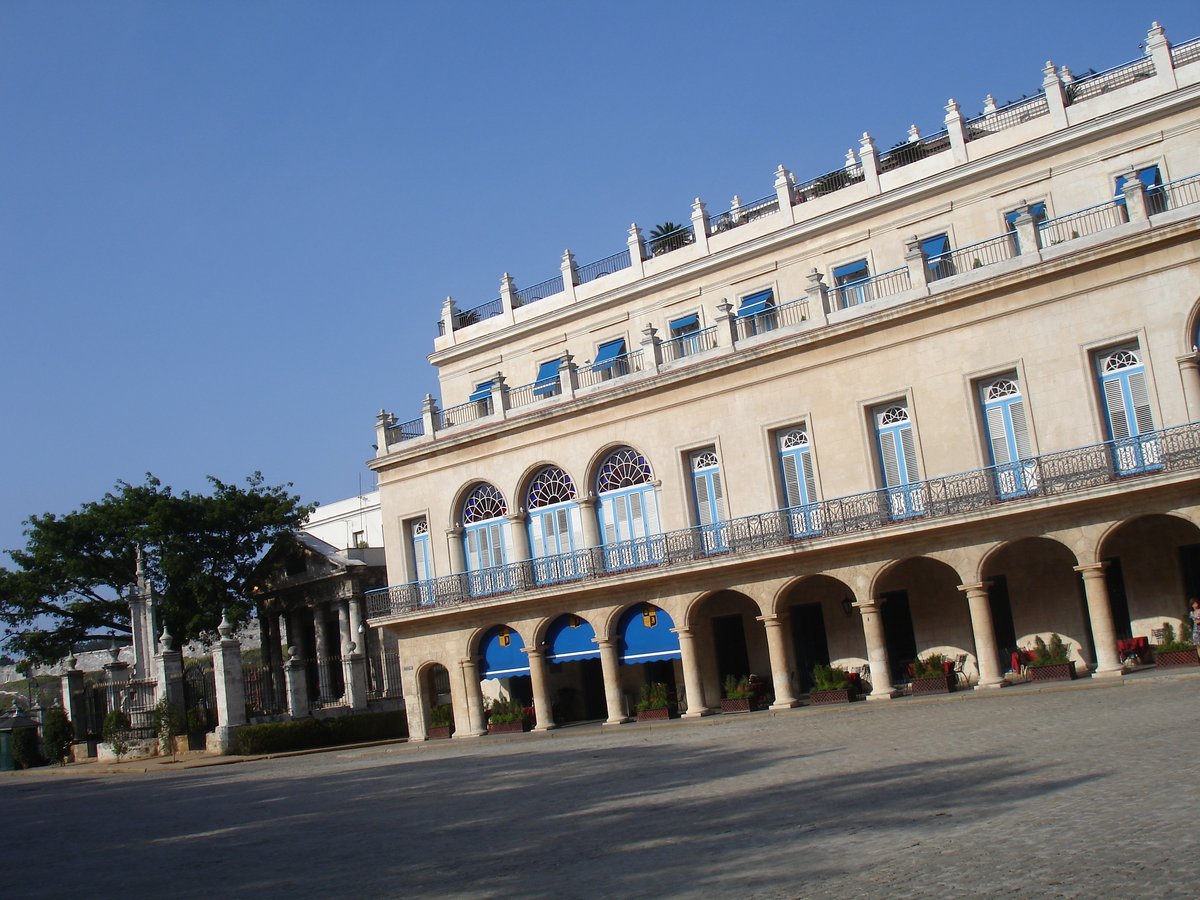
Palacio de los Capitanes Generales: Visiting Hours, Tickets, and Historical Significance in Havana, Cuba
Date: 15/06/2025
Introduction
Situated on the historic Plaza de Armas in Old Havana, the Palacio de los Capitanes Generales is an enduring symbol of Cuba’s colonial legacy and architectural splendor. Built between 1772 and 1792, this Baroque masterpiece served as the residence and administrative center for the Spanish Captain Generals—the island’s highest colonial authorities—until Cuba’s independence in 1898. Over its centuries-long history, it has also housed U.S. military governors, served as the Cuban presidential palace, and, since 1968, operates as the Museo de la Ciudad (City Museum of Havana). The palace’s strategic location, rich collections, and ongoing role in heritage conservation make it a must-see Havana historical site for cultural travelers, history enthusiasts, and architecture lovers alike (TripCuba, Mexico Historico, Museo de la Ciudad).
Table of Contents
- Overview and Historical Context
- Architectural Features and Artistic Heritage
- Visiting Hours and Ticket Information
- Accessibility and Visitor Amenities
- Travel Tips and Getting There
- Guided Tours and Special Features
- Social and Cultural Significance
- Restoration and Conservation Efforts
- Nearby Attractions and Interactive Experiences
- Frequently Asked Questions (FAQs)
- Summary and Recommendations
- References
Overview and Historical Context
Origins and Construction
The Palacio de los Capitanes Generales was constructed on the site of Havana’s original parish church, reflecting the city’s transition from religious to administrative prominence in the Spanish Empire. Designed in the Cuban Baroque style, the palace is celebrated for its limestone façade, arched colonnades, ornate ironwork, and imposing presence on Plaza de Armas. Its central courtyard, adorned since 1862 with a Carrara marble statue of Christopher Columbus, serves as a tranquil oasis amid the urban bustle (TripCuba).
Colonial Seat of Power
For more than a century, the palace was the administrative heart of Spanish colonial rule in Cuba, home to 65 Captain Generals and the site of major political, diplomatic, and social events. Its Salón del Trono (Throne Room) was modeled after Madrid’s Royal Palace, highlighting the building’s symbolic and ceremonial importance (CubaConecta).
Transition and Transformation
After the Spanish-American War, the palace briefly housed U.S. military governors and later served as the presidential palace of the Cuban Republic until 1920. In 1968, it became the Museo de la Ciudad, a central hub for Havana’s restoration projects and a repository of the city’s cultural memory (TripCuba).
Architectural Features and Artistic Heritage
Baroque Grandeur and Syncretism
The palace is the finest example of Cuban Baroque architecture, blending Spanish design with local materials such as coral stone and native woods. Moorish influences are evident in the interior tilework and ornamental details, while Neoclassical touches appear in the building’s balanced proportions (Mexico Historico).
Notable Spaces
- Salón del Trono: Featuring royal regalia and European artifacts.
- Sala de las Banderas: Displays flags from Cuba’s independence struggles.
- Pinacoteca: Exhibits works by renowned Cuban artists.
- Salón Blanco: Decorated with Venetian mirrors and elegant furnishings.
- La Heráldica and La Giraldilla: Dedicated to heraldry and Havana’s iconic bronze statue.
Courtyard and Grounds
The palace’s arcaded limestone courtyard, lush gardens, and peacocks provide a serene, photogenic environment. Arcaded walkways offer shaded passages, and the courtyard statue of Columbus underscores the building’s connection to European exploration (trek.zone).
Visiting Hours and Ticket Information
- Opening Hours: Tuesday–Sunday, 9:00 AM to 5:00 PM (last entry at 4:30 PM). Closed on Mondays and public holidays.
- Admission: Typically 3–10 CUP, with discounts for students and seniors. Children under 12 are free.
- Guided Tours: Usually 5 CUP extra, offered in multiple languages. Advance booking recommended during peak seasons.
- Tickets: Available at the entrance. Online sales are limited; check with authorized tour providers.
Accessibility and Visitor Amenities
- Mobility: Ground floor and main exhibition areas are accessible; upper floors may have limited access due to stairs and uneven surfaces. Wheelchair ramps are available for main areas.
- Restrooms: Available on both floors; facilities are basic.
- Gift Shop: Offers books, postcards, and local crafts.
- Photography: Non-flash photography is generally allowed; flash and tripods may be restricted.
Travel Tips and Getting There
- Location: West side of Plaza de Armas, Old Havana. Easily reached on foot or by taxi from other popular sites.
- Best Times to Visit: Early mornings or late afternoons to avoid crowds and heat.
- Dress Code: Lightweight, modest clothing is recommended.
- Language: Most signage in Spanish and English; guided tours enrich the experience for all visitors.
- Nearby Attractions: Havana Cathedral, Castillo de la Real Fuerza, Plaza de Armas book market, and more.
Guided Tours and Special Features
- Guided Tours: Enhance your visit with deep historical and artistic insights. Available in multiple languages.
- Special Events: The museum hosts occasional cultural events and temporary exhibitions. Check the official City Museum website for updates.
- Photo Opportunities: The courtyard, Salón del Trono, and nautilus shell baths are popular for photography.
Social and Cultural Significance
The Palacio is more than a museum—it is a living symbol of Havana’s past and present, reflecting the city’s evolution from colonial outpost to modern metropolis. Its collections and exhibitions connect visitors to Cuba’s political history, artistic achievements, and ongoing heritage conservation (TripCuba).
Restoration and Conservation Efforts
As the headquarters for Havana’s restoration initiatives, the palace is actively involved in safeguarding the city’s architectural and cultural treasures. Visitors are encouraged to respect all barriers and signage to protect the site for future generations (CubaConecta).
Nearby Attractions and Interactive Experiences
- Plaza de Armas: The city’s oldest square, perfect for strolling and people-watching.
- Castillo de la Real Fuerza: One of the oldest forts in the Americas.
- Havana Cathedral: A stunning Baroque landmark.
- Virtual Tours and Maps: Available through the museum’s website for planning your visit (trek.zone).
Frequently Asked Questions (FAQs)
Q: What are the Palacio de los Capitanes Generales visiting hours?
A: Tuesday–Sunday, 9:00 AM to 5:00 PM; closed Mondays and public holidays.
Q: How much are tickets?
A: 3–10 CUP, with discounts for students and seniors; children under 12 are free.
Q: Are guided tours available in English?
A: Yes, in multiple languages; advance booking is recommended.
Q: Is the palace accessible for wheelchair users?
A: Ground floor and main areas are accessible; upper floors have limited access.
Q: Can I take photos inside?
A: Non-flash photography is generally allowed; check restrictions on flash or tripods.
Q: Are there special events or exhibitions?
A: Yes. Visit the official museum website for current schedules.
Summary and Recommendations
The Palacio de los Capitanes Generales is a monumental testament to Havana’s colonial and republican history, offering a richly immersive experience through its Baroque architecture, thematic exhibitions, and vibrant courtyard. Its convenient location near other historic sites, reasonable admission, and guided tour options ensure a rewarding visit. For the best experience, check current visiting hours, plan ahead for guided tours, and explore nearby attractions. To stay updated on events and exhibitions, consult the museum’s official channels and consider using apps like Audiala for enhanced audio guides and visitor tips (CubaConecta, Wikipedia, TripCuba).
References
- TripCuba - City Museum of Havana
- Mexico Historico - Architectural Beauty
- Wikipedia - Palacio de los Capitanes Generales
- Museo de la Ciudad - Official Guide
- CubaConecta - History and Culture
- Trek.Zone - Palacio de los Capitanes Generales
- Official City Museum of Havana Website
